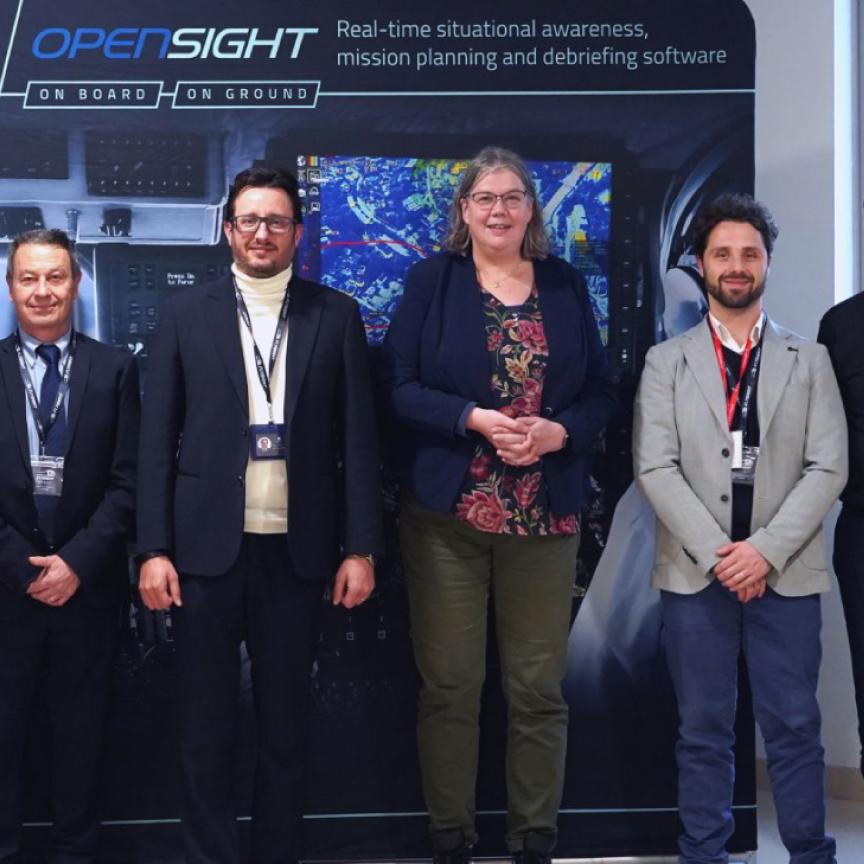The quality of aerospace-grade carbon fiber is still largely assessed manually, a process often rife with human errors. Automated monitoring solutions are necessary to ensure high-quality standards during production continuously.
Building off the success of the AirCarbon II automatic inspection system introduced in 2016, Fraunhofer IGCV, Europe's largest application-oriented research organization, partnered with SGL Carbon GmbH and Chromasens GmbH to develop the next generation AirCarbon III for monitoring carbon fiber production and adjacent processes. The AirCarbon III system relies on the Chromasens allPIXA wave line scan camera and a Chromasens Corona II LED line scan light to achieve seamless and continuous surface monitoring.
AirCarbon III detects protruding filaments, lint, and similar foreign bodies and distinguishes the types of defects in carbon fiber. Combined with data management and a user-centered interface, the AirCarbon III system enables carbon fiber production processes to be continuously and automatically monitored from precursor production through the various intermediate steps to the final sized fiber.
Compared to conventional CCD sensors, the significantly higher resolution of the Chromasens allPIXA wave camera's CMOS color line sensor makes the detection of the protruding filaments, which range from 7-12 µm in diameter, possible. To expand the sensor's measurement width, a novel and patented optical concept was designed and implemented that triples the Chromasens camera's field of view while keeping the data volume the same. The system was designed primarily for large-format line sensors up to 85 mm. However, it is transferable to smaller sensors or area sensors. To integrate the system quickly and easily into the process, it also provides autofocus, which also allows process-related fluctuations in the object plane to be compensated for.
Since deep black materials such as carbon fibers absorb an extremely large amount of light, they are difficult to make visible in image processing. The particularly dark surface of the fibers therefore requires special industrial lighting to ensures that a high-contrast image is generated on the sensor. With the Chromasens Corona II illumination system capable of up to 3,500,000 lux, high-contrast images are provided that enable excellent fiber monitoring. The high resolution of the camera sensor allows defects to be made visible down to almost the filament level (up to 10 µm). In this way, even the smallest anomalies can be detected.
An image processing algorithm developed for fiber production was ported to a Field Programmable Gate Array (FPGA). This is because high-volume image data is captured at up to one gigabyte per second. Thanks to FGPA, data can be processed in real-time. Downstream data processing was implemented in software developed in-house by Fraunhofer IGCV, which reliably handles defect detection. With a machine learning approach and selected training data, the reliable differentiation of the detected defects is successful. Thus, not only defects on the fiber material can be reliably detected, but also a separation according to defect types can be performed automatically. This eliminates the need for manual analysis while increasing the information content.
Fraunhofer equipped its own vision PC for AirCarbon III with all the necessary interfaces for CameraLink cameras, lighting control, Gig1000 Ethernet, and an enclosure to protect against flying fibers. After filtering and preprocessing, the image data is stored in a database on the PC. Data is analyzed using INFIMO (Inline Fiber Monitoring) software, which provides both roving-specific viewing of defects and a deeper understanding of the data.
The partners and scientific participants are already in the final phase of the project. Here, tests are being carried out at the pilot plant of the SGL Carbon, and data is being evaluated. The developed systems are being tested and improved both in the laboratory and in the pilot plant.

